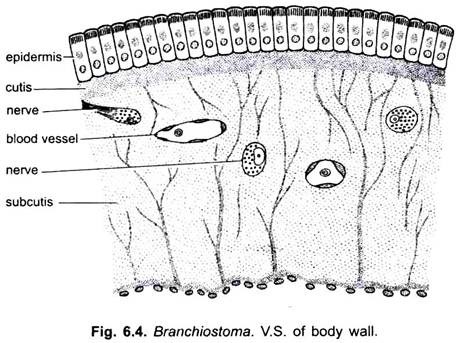The body wall (Fig. 6.4) is formed of outermost thin, transparent skin, well-developed musculature and a parietal peritoneum.
Skin:
There is a thin, outermost, perforated cuticle covering an epidermis which, unlike vertebrates, is made of a single layer of columnar epithelial cells. These are placed on a basement membrane. Cuticle is secreted by the epidermal cells. In between the epidermal cells are some sensory cells, but there are no glands or chromatophores. A thin layer of tough fibrous connective tissue forms a cutis below the epidermis.
ADVERTISEMENTS:
Below the cutis is a subcutis made of a gelatinous material containing nerve fibres cells and blood vessels. The integument is like that of invertebrates, being made only of epidermis. A dermis is lacking, which is present in vertebrates. The cutis and subcutis are traversed by a system of canals. Below the subcutis are myotomes lined internally by a thin layer of parietal peritoneum, except in the region of the pharynx where this peritoneum is restricted to small tracts only.
